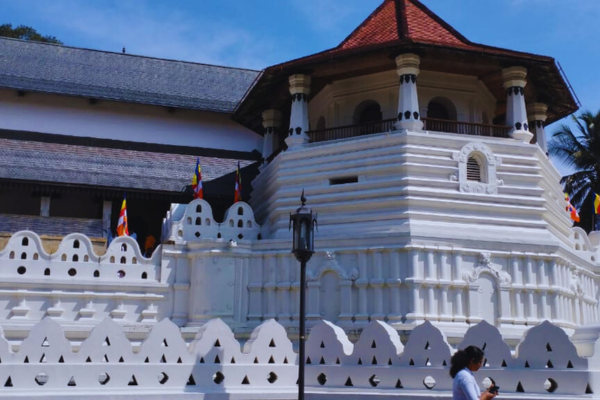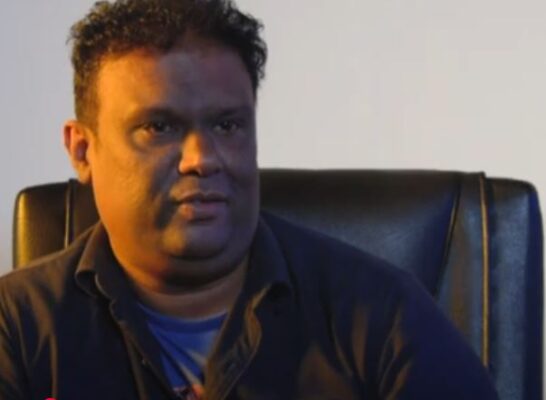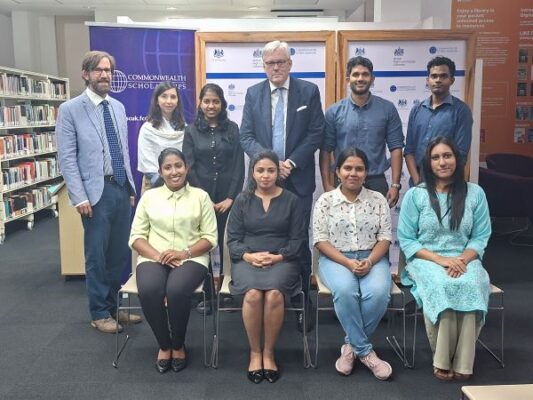Sri Dalada: Guardian of Lanka’s Sovereignty and Sacred Heritage – By Malsha – eLanka

The 10-day public exhibition of the Sacred Tooth Relic, which began on April 18 after a hiatus of 16 years, concludes today.
Revered by millions, the Sacred Tooth Relic of the Buddha has long been regarded as Sri Lanka’s ultimate symbol of sovereignty. Since its arrival in the island, the relic has served as the insignia of royal authority, moving alongside the shifting seats of power. For the past three centuries, it has been enshrined at the Dalada Maligawa (Temple of the Tooth Relic) in Kandy, within the last stronghold of the Sinhala monarchy.
The Sacred Tooth Relic is venerated through a rich tapestry of rites and rituals that have evolved over centuries, capturing the fascination of numerous foreign visitors. Among them, John Davy, an English physician who toured the island with Governor Sir Robert Brownrigg, documented his impressions in his 1821 work, An Account of the Interior of Ceylon and of Its Inhabitants with Travels in that Island. Davy described the Dalada Maligawa as the domestic temple of the king and “the most venerated of any in the country,” housing what he called “the most precious thing in the world” to Buddhists—the Sacred Tooth.
During the rebellion of 1818, Davy witnessed the rare public display of the relic after it was recovered from concealment. He detailed its opulent casing: a tooth encased in sheet gold, housed in a gold container adorned with emeralds, diamonds, and rubies. The outermost casket, one of seven, was festooned with gold chains and studded with a dazzling array of gems. Among its adornments was a bird crafted entirely from precious stones, suspended by a gold chain.
Sacred Tooth Relic
Image Source : island
Similarly, James Emerson Tennent, Colonial Secretary of Ceylon, recorded his observations in Ceylon (Volume II). He described the inner sanctum of the Temple as a small, stifling chamber with ivory-inlaid doors, where the relic was enshrined within a bell-shaped shrine covered with gems and layered within smaller golden cases, ultimately revealing a golden lotus cradling the sacred tooth.
American professor John F. Hurst, in The Country and the People of India and Ceylon (1891), marveled at the craftsmanship of the Kandyan artisans, likening it to the finest Italian work. He vividly depicted the temple’s complex structure and the multiple nested golden shrines, adorned with rubies, pearls, and cat’s-eyes, protecting the sacred relic.
A Sacred Journey Across Centuries
The Sacred Tooth Relic’s journey to Sri Lanka is a story of devotion and daring. After Buddha’s cremation, Arahat Kema retrieved the fourth left canine and handed it to the King of Kalinga (modern-day Odisha, India). Revered for over 800 years, the relic eventually had to be safeguarded from political turmoil. King Guhasiva of Kalinga, fearing its capture, entrusted it to Princess Hemamala and Prince Dantha, who carried it hidden in Hemamala’s hair to Sri Lanka.
King Kirti Sri Meghavanna, who ruled Anuradhapura from 300–331 AD, received the relic with grand royal pageantry. According to the Mahavamsa chronicle, the relic was placed at Dhammacakka Vihara, and the king decreed an annual procession through Anuradhapura to honor it. Over 900,000 kahapanas were reportedly spent to celebrate the arrival of the relic. The Chinese pilgrim Fa-Hien, visiting in 399 AD, also recorded witnessing these grand celebrations, with elephants adorned in jewels leading the procession.
Symbol of Sovereignty
From that point onward, possession of the Sacred Tooth Relic symbolized the right to rule Sri Lanka. It was during King Vimaladharmasuriya I’s reign that the relic was permanently housed near the royal palace in Kandy, giving birth to the famed Dalada Maligawa. Successive kings expanded and embellished the temple complex.
Historian Prof. Lorna S. Dewaraja, in her work The Kandyan Kingdom of Sri Lanka, emphasizes that the relic’s possession alone gave legitimacy to any ruler. Even the Nayakkar kings zealously guarded it, especially during times of foreign invasion. Public exhibitions of the relic during the reigns of Sri Vijaya Rajasimha and Kirti Sri Rajasimha are well-documented, with the kings personally displaying the relic to their subjects and foreign dignitaries, including emissaries from Siam (Thailand).
Struggles to Safeguard the Relic
During the 1818 rebellion against British rule, Wariyapola Sri Sumangala Thero courageously smuggled the relic from the Dalada Maligawa and hid it in Hanguranketa to prevent its capture. After British forces seized the relic and captured the monk, the rebellion quickly subsided—a testament to the relic’s immense political and spiritual influence. John Davy observed that regaining the relic had an immediate pacifying effect on the country’s populace.
Dalada exposition of 1828 as illustrated in Jonathan Forbes’ Eleven Years in Ceylon
Image Source : island
Dalada Expositions and Ritual Traditions
The tradition of the Dalada exposition has deep roots. Major Jonathan Forbes, in Eleven Years in Ceylon, provides an account of the first public exposition during British rule in 1828. This four-day ceremony featured Kandyan music and public offerings, with devotees approaching one by one to glimpse the sacred relic and present their gifts.
Ancient texts like the Dalada Siritha outline detailed protocols for reverence and rituals concerning the Sacred Tooth Relic. According to Prof. Wimal Hewamanage from the University of Colombo, while daily rituals existed from the Anuradhapura period, a formal constitution for Dalada rituals emerged during the Kurunegala era. During foreign invasions, when grand processions were unsafe, expositions of the relic alone took place instead.
The British-led 1828 exposition, organized during a severe drought, sought the sacred relic’s blessings for rain—reflecting ancient agrarian beliefs. Independent expositions continued after Sri Lanka’s independence, the first being held in 1952.
Enduring Legacy
Today, as the latest public exhibition concludes, the Sacred Tooth Relic remains not merely a religious artifact but a symbol of Lanka’s enduring sovereignty, spirituality, and cultural pride—a legacy enshrined in the hearts of millions across centuries.

























